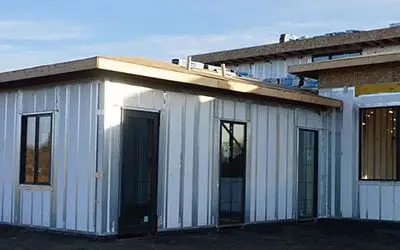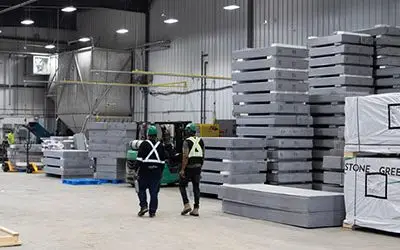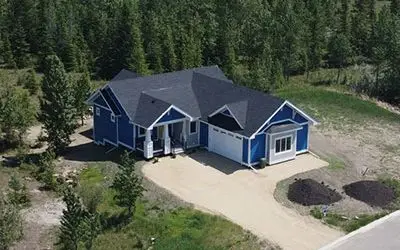In the construction industry, various products are available to construct the building envelope. Each of the traditional building methods has their strengths, but why not build with a product that combines the best from each into one streamlined process? Today we will compare ICE Panels with other commonly used building methods and explain why ICE Panels are the superior choice for creating an energy-efficient building envelope.
ICE Panels vs. Lumber
When planning a new construction project, lumber is often the first building material that comes to mind. However, there are some key reasons why other materials, like the ICE Panel, come out on top:
- Lumber is an organic material that will break down over time. ICE Panels consist of steel and EPS, which are both inorganic materials, making the ICE Panel a long-lasting and durable material.
- Lumber tends to be mass-produced, and sometimes twisted lumber arrives at the job site. ICE Panels are manufactured for precision construction, ensuring consistently straight, square edges.
- Lumber only covers the framing portion of the building envelope. ICE Panels combine framing, insulation, and vapour barrier into one streamlined step.
- Lumber is highly flammable and not ideal in situations involving fire. On the other hand, ICE Panels are a reliable solution for both load-bearing and non-load-bearing assemblies with fire ratings of up to 1 or 2 hours. Even in the event of flame exposure, ICE Panels have proven to contain fires effectively, resulting in minimal to no damage to nearby vehicles from the heat.
ICE Panels vs. SIPs
ICE Panels are commonly mistaken for Structural Insulated Panels (SIPs), and while the two products are similar, there are some significant differences:
- SIPs consist of wood sheathing and foam insulation, both materials having different life cycles. Wood is an organic material that will break down over time, contributing to mould and mildew growth. ICE Panels consist of two inorganic long-lasting and durable materials that won’t result in any mould or mildew issues.
- SIPs arrive on-site closed in. The sheathing on both sides of the panel makes it hard to verify the product’s structural integrity, as you cannot visually confirm the quality of the panel core. With ICE Panels, both the EPS core and steel framing are exposed, allowing for a comprehensive inspection to be done.
- Building with SIPs requires wood framing to construct the exterior walls. Relying on conventional studs to complete the envelope creates thermal bridging in the walls, allowing external temperatures to make their way into the building, which can cause moisture build-up. ICE Panels are thermally broken, meaning no heat loss through the wall will happen.
- SIPs tend to require on-site modifications and are quite heavy due to their components, whereas ICE Panels are lightweight and arrive on-site ready to be installed. With the exception of panels over 12 feet tall, ICE Panels are light enough for a pair of crew members to assemble by hand.
ICE Panels vs. ICF
Insulated Concrete Forms (ICF) are another building material that are somewhat similar to ICE Panels. Here are the main differences between these two:
- ICF blocks can result in issues if installed by inexperienced installers. ICE Panels are structurally engineered so that no additional reinforcement, like concrete or rebar, is needed, offering a user-friendly and streamlined building process
- Concrete makes up a large portion of ICF block construction, making it very labor-intensive and can possibly result in messy work. ICE Panels provide a building envelope in one simple step.
- ICE Panels are known to be more cost-effective than ICF. Using concrete results in more time and labour needed on the job site, whereas an ICE Panel building envelope can be erected with a team of 2-3 crew members, saving time and money.
If you’d like to learn more about ICE Panels, connect with our customer service team by calling 204-726-1426 or sending us a message – click here to complete our contact form.



